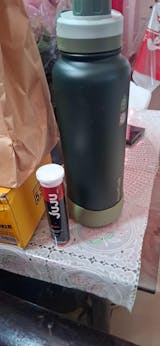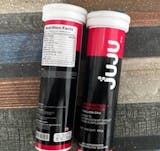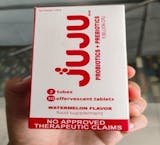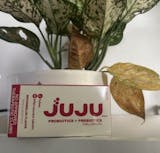Many people are affected by unpleasant dark spots. They may form naturally or as an unavoidable result of ageing. Some of these discolorations can be a result of not moisturizing enough, not getting enough nutrients, or too much sun exposure.
No one wants dark marks on their face because it makes their skin look less than perfect. Frustrating as it may be, there are several potential cause of dark spots on your sensitive skin.
Facial dark spots are unsightly and might give the impression that you are much older than you really are. Getting rid of such discolorations is usually a difficult task, but it can be simplified by following a few simple guidelines.
Luckily, in this article, we’re going to talk about how you can get rid of dark spots on your face.
IN THIS ARTICLE
06. Conclusion
What is Hyperpigmentation Or Dark Spots?
Some parts of the skin become noticeably darker than others due to a condition known medically as hyperpigmentation. Hyper means more, and pigment signifies color.
Spots or patches of hyperpigmentation can be any shade of brown, black, grey, red, or pink. Age spots, sun spots, and liver spots are all names for the same thing: a kind of skin discoloration.
Hyperpigmentation is used to describe darker skin but is not necessarily a medical problem. While abnormally dark skin is usually harmless, it can be indicative of a more serious underlying health issue. Discover the different forms of hyperpigmentation, what causes it, and how it can be treated.
While scarring from acne or other skin disorders, pharmaceutical side effects, and inflammation from other medical conditions are all potential causes of hyperpigmentation, sun exposure is the most common and most significant cause. Damage from the sun’s ultraviolet rays is inevitable if we keep our skin unprotected. Freckles and more serious disorders like cancer of the skin are two outcomes of this damage. Hyperpigmentation describes a wide range of medical disorders.
CAUSES OF DARK SPOTS ON THE FACE
Melanin is a pigment produced by skin cells that gives skin its characteristic color. Excess melanin is produced by damaged or diseased skin cells. As the melanin accumulates, the affected area may appear darker than it actually is. But several factors can also affect the presence of dark spots on the skin:
Irritation
Products designed for the hair or skin might cause irritation and black spots on the skin.
Shifts In Hormone Levels
The skin disorder known as melasma causes darkening of the skin in localised areas. Women, particularly pregnant ones, are at more risk for the illness.
Hormones may play a role in the development of melasma, says the American Academy of Dermatology.
Direct Sunlight Exposure
Brown spots are most commonly brought on by time spent in the sun or in a tanning bed.
Midlife is a common time for hyperpigmentation to manifest. When this happens, solar damage has already begun to appear on the skin. This is especially the case if you didn’t develop the habit of using sunscreen and other sun protection measures at a young age.
This is especially true for those with fair hair or complexion who have experienced frequent or severe sunburns.
However, there are other potential causes of discoloration. In addition to UV rays, these other factors may also contribute.
Reactions to Medication
An increase in skin pigmentation and the development of black patches can be a side effect of some drugs. The most typical offenders are tetracyclines, psychiatric medications, and non-steroidal anti-inflammatory medicines (NSAIDs).
Healing a wound
A dark scar may persist even after a wound has healed from an insect bite, burn, or cut. In this case, time may help these to disappear.
Face Dark Spots: How To Get Rid Of Dark Spots On Face
Skin discoloration is not a medical emergency, yet some people may choose to get it removed anyhow.
A dermatologist can provide treatments or perform operations to brighten dark spots, or perhaps eliminate them entirely. Medical procedures are usually more expensive and risky than topical treatments, but they can have a more immediate effect.
It’s possible that the source, the size, and the location of the black spot all have a role in determining the optimal treatment.
Chemical peels
A chemical peel is a procedure in which a solution is applied to the skin in order to exfoliate the surface, ultimately resulting in new skin growth. In time, it could lighten up those age spots. These contain exfoliating acids including salicylic acid and glycolic acid. The underlying skin may become healthier and more evenly toned as a result of this. However, it may cause skin irritation in certain people.
Laser treatment
There are several different types of laser therapy on the market. An intense pulsed light (IPL) laser is the most often used type of laser for treating skin discoloration. Light absorbed by melanin disperses the discoloration. In this method, black spots are burned away by a focused beam of light energy that is applied to the skin in a series of superficial passes. Among the potential side effects are bruising, edoema, redness, tightness, scarring, infection, and changes in skin texture.
Topical Treatments
Whitening treatments available by medical prescription lighten dark areas over time. In most cases, this takes a few months.
Dark spots can also be treated using a variety of over-the-counter treatments. Spots may be reduced in visibility, but complete removal is unlikely. Try to find a lotion with retinoids, alpha hydroxy acid, tranexamic acid, glycolic acid, deoxyarbutin, or kojic acid in it.
Microdermabrasion
Hyperpigmentation that is limited to the epidermis can be treated with microdermabrasion, which is performed in a medical office (superficial scarring).
Your dermatologist will use a handheld device resembling a drill and attach a wire brush or some other abrasive attachment to it during the operation. Simply gliding the instrument over the skin removes the epidermis quickly and painlessly.
Getting the results you want may require more than one session.
Cryotherapy
Cryotherapy is a method that uses liquid nitrogen to freeze the dark areas, causing damage to the skin cells. The skin usually lightens up subsequently after healing. Cryosurgery uses a liquid nitrogen solution to freeze ageing spots, causing them to fade away. The result is a peeling away of the discoloured skin. A permanent bleaching of the treated areas is a potential side effect.
Talk to a Dermatologist
There are numerous alternatives for correcting brown spots and patches because there are so many potential reasons of uneven pigmentation and so many people who want to have even skin tone. However, not every area can be handled the same for the treatment for dark spots. Consult a dermatologist before making any decisions.
The duration and degree of treatment for hyperpigmentation may vary based on the patient’s skin tone. Dr. Cynthia Cobb, DNP, APRN, WHNP-BC, MEP-C notes that people of all skin tones can benefit from a variety of treatments, albeit those with darker complexion will need to be patient while the medication takes effect.
Topical treatments generally take longer to produce visible results. Patience is key with any treatment option. And please, visit a doctor when planning to use a product.
Preventing Dark Areas: What You Can Do

Sun damage can cause age spots. There are, however, measures that may be taken to lessen the likelihood of developing dark spots and to stop fading ones from reappearing.
Protect Yourself From The Sun
Protecting top layers of skin from sun damage, which includes the development of age spots, is crucial in the fight against hyperpigmentation. To avoid sun damage, you should avoid going outside during peak hours, always wear a helmet, and liberally use sunscreen. One of the greatest ways to prevent black spots is to stay out of the sun. This is because UV radiation from the sun increase the formation of melanin. Do not go outside between 10 a.m. and 2 p.m. It’s best to avoid doing anything outdoors during this time of day, when the sun’s rays are at their strongest.
Make Sure You Put On Sunscreen
Avoiding the sun is not an easy task, as we all know. But we can protect ourselves from the sun’s harmful UV rays by donning sunscreen. Apply a broad-spectrum sunscreen with an SPF of at least 30 15 to 30 minutes before going outside. Use plenty of sunscreen, and remember to reapply it at least every two hours and more frequently if you’re doing any sort of sweating or swimming. Applying new sunscreen every two hours is essential if you’re going to be outside for any length of time.
Don’t Touch Your Bites, Pimples, or Other Wounds
If your mother ever told you, “Don’t pick!” at a mosquito bite or a stubborn blackhead, remember that advice and resist the urge to put your hands on itchy bug bite. Jeanine Downie, MD, director of Image Dermatology in Montclair, New Jersey, states, “Scratching and picking at a place will only worsen the inflammation that is responsible for acne scars resulting to skin discoloration.” You can make things look better now, or you can make them look worse later.
Keep Skin Moist to Boost Cell Turnover
While your primary goal with hyperpigmentation is to lighten the dark spots, an effective over-the-counter (OTC) moisturizer should contain ingredients that benefit the skin in other ways. “In addition to addressing the pigment issues, a good product will have moisturizing agents like glycerin or hyaluronic acid, and maybe even a retinol to boost cell turnover,” says Doris J. Day, MD, a clinical assistant professor of dermatology at NYU Medical School in New York City and the author of Beyond Beautiful: Using the Power of Your Mind and Aesthetic Breakthroughs to Look Naturally Young and Radiant. “These inactive ingredients allow the active brighteners to work more effectively.”
A good moisturizer can also restore the skin’s lipid, or fat, barrier, helping new skin cells and gives you a healthy skin as they rise to the surface in place of old ones, notes the University of Tennessee Medical Center.
Hydrate Your Skin To Speed Up Cell Renewal
Although fading hyperpigmentation’s dark patches is your top priority, a good OTC moisturiser should provide additional benefits to the skin as well. Doris J. Day, MD, clinical assistant professor of dermatology at NYU Medical Center in New York City, and author of Beyond Beautiful: Using the Power of Your Mind and Aesthetic Breakthroughs to Look Naturally Young and Radiant, says that in addition to addressing pigment issues, a good product will have moisturising agents like glycerine or hyaluronic acid, and possibly even a retinol to boost cell turnover. The effectiveness of the active brighteners is increased by the presence of these inactive substances.
According to research from the University of Tennessee Medical Center, using a high-quality moisturiser can also help maintain the skin’s lipid (fat) barrier, which in turn aids the health of newly-emerging skin cells as they replace older, damaged cells at the surface.
Vitamin C Consumption
In addition to its effectiveness, vitamin C is a common remedy. Hyperpigmentation and dark spots can be lightened and faded with vitamin C, according to studies, much like hydroquinone but without the irritation. Aesthetician Renée Rouleau of Dallas recommends looking for high quantities of magnesium ascorbyl phosphate in the ingredients of a lightening treatment in order to reduce hyperpigmentation. Vitamin C in this form is more potent since it does not degrade.
The use of soy, niacinamide, ellagic acid, arbutin, and licorice, among other over-the-counter (OTC) choices, has shown promise in some studies. If your doctor thinks it would help reduce responses and irritation, he or she may prescribe a combination of these therapies that includes hydroquinone.
Use of Retinol Serum
Derived from vitamin A, retinoids are among some of the oldest OTC skin care ingredients used. Their small molecular structure allows them to penetrate deep into the skin and treat the layers below your epidermis.
Retinoids can come in either a prescription or OTC formula. However, OTC versions tend to be weaker. If you don’t see any results after a couple of months, talk with your dermatologist about the prescription retinoid tretinoin (Retin-A).
Frequently Asked Questions
What deficiency causes black spots on face?
To begin with, hyperpigmentation signs like black patches have been connected to vitamin B12 deficiency. You can treat this by taking vitamin B12 supplements or eating a diet high in vitamin B12-containing foods, such as fish, meat, poultry, eggs, milk, and milk products.
What kinds of food contribute to the formation of black spots on the face?
Consider reducing how much sugar you take in. Inflammation of the skin, a decrease in collagen formation, dark patches, and accelerated ageing can all be caused by the high sugar or glycemic index content [of sugary foods].
What vitamin is best for removing dark spots?
Some vitamins can help fade dark spots and make your skin tone more even. Vitamin C, vitamin B12, and vitamin E are three of the most effective vitamins for reducing the appearance of black spots. While blocking melanin production, vitamin C encourages collagen production in the skin.
What fruit can you eat to get rid of black spots?
The vitamin C, vitamin K, folic acid, and tannin content in blueberries, blackberries, and strawberries is exceptionally high. Improved cell turnover and more radiant skin are the results of the combination of immune-supportive substances used here.
Conclusion
The removal of dark spots on the face is not a simple task. Some natural remedies can be used to get rid of these spots. In most cases, the sooner a skin condition is addressed, the better.
We hope the information in this post has been useful in eliminating (or at least reducing) the appearance of facial dark spots. Choose your acne treatment and skin care product with care and don’t settle for the first thing you find. The world of beauty can be so overwhelming, but it should never be a dark and mysterious place for you. Never be too shy to seek advice from others, especially on specialists like board-certified dermatologist, if you’re struggling with dark spots on your skin. Although it may feel like way at times, you have support. Keep in mind that you may not find success with a given product right away, so don’t give up!










